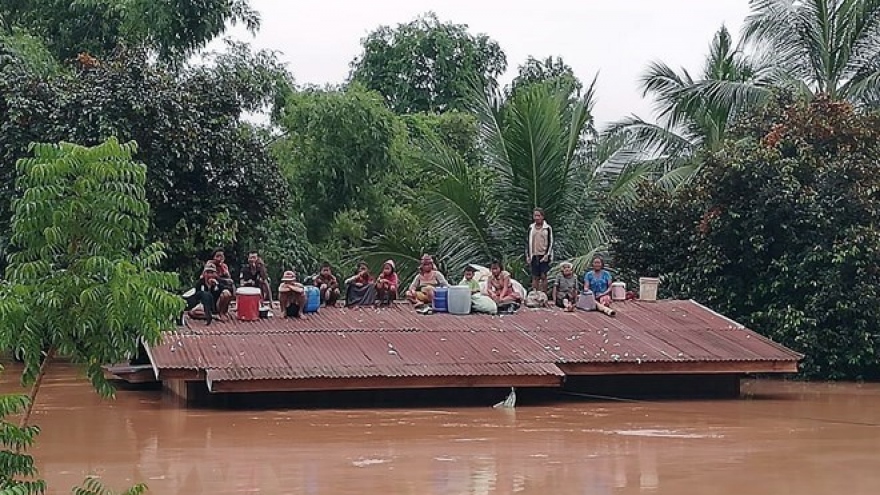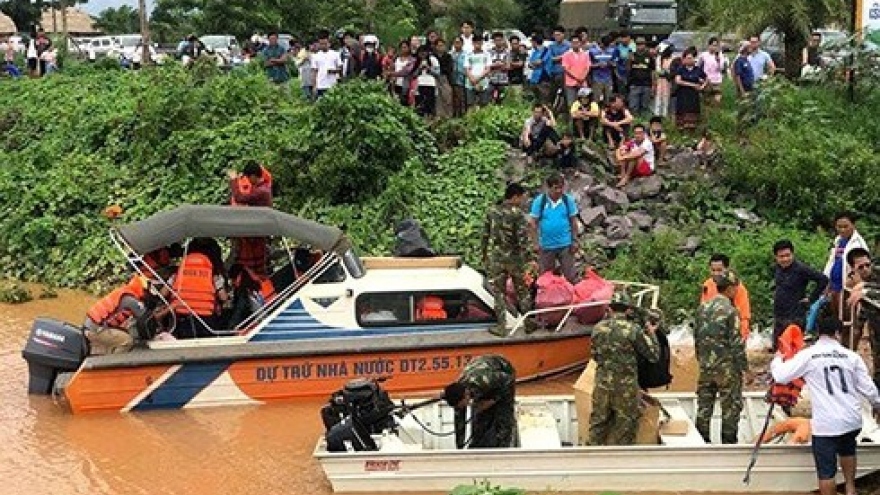Helicopter lifts 26 Vietnamese to safety in Laos
The 24 employees of a subsidiary of the Hoang Anh Gia Lai (HAGL) group, and their two children, suffered no injury during their two-day ordeal and are in stable condition.
 |
|
Some of the Vietnamese workers who have been rescued from the dam collapse zone in Laos. Photo by VnExpress/A Hoa
|
The rescue operation, which used helicopters, was organized by HAGL on July 24.
The 26 people had been stranded on a hill in the rubber plantation cultivated by their company since July 23 when a hydropower dam just 600 meters away collapsed in Laos' southeastern province of Attapeu.
The workers said they’d just returned to their tents on top of the hill after work when they heard thundering sounds and saw raging waters sweeping trees away right under them.
"We knew immediately that it was a dam breach. We panicked. Many of us started to cry,” said Nguyen Van Hai, deputy director of the plantation that was set up two years ago.
The workers said there were heavy rains several days earlier. “We did not imagine that the dam would break because it was new and looked firm,” one of them said.
They had enough food while they were stranded, but “the spirit was low,” Hai said.
Meanwhile, Lao authorities have found 26 bodies and listed 131 people as missing. 17 injured people have been hospitalized and over 3,000 are believed to be trapped amidst the floods triggered by the dam’s collapse.
There’s been no report of Vietnamese casualties and none of the missing are from Vietnam, according to Laos authorities.
Vietnam’s agriculture officials have warned that the incident could send water level in the border province An Giang to rise seven to 10 centimeters this weekend.
The dam is part of a hydropower project being built by the Vientiane-based Xe Pian Xe Namnoy Power Company, or PNPC, a joint venture between Laos, Thailand and the Republic of Korea formed in 2012.
Work on the US$1.02 billion dam had started in February 2013 and was scheduled to be completed later this year.
The 410MW hydropower plant was to export 90% of its electricity output to Thailand, and send 10% to the national grid in Laos.



